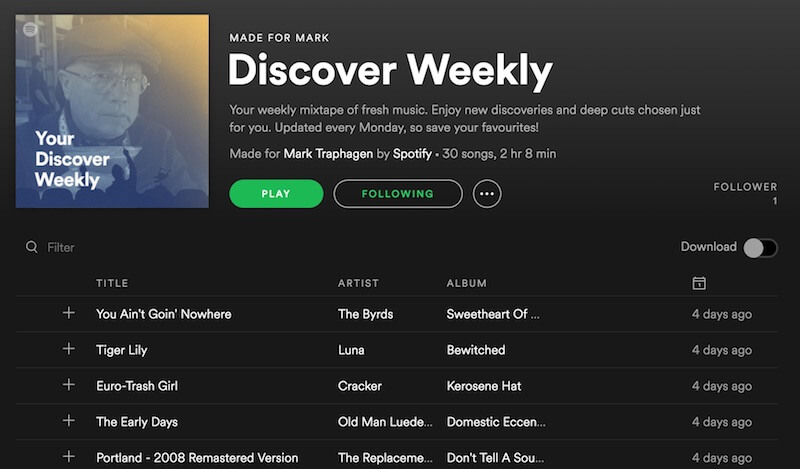Thanks to Foodbot, Eric always gets his soup just the way he likes it. Are your customers and prospects getting marketing messages that they will not only like, but remember, engage with, and act on?
In this episode of our popular Here’s Why digital marketing video series, Perficient Digital’s Mark Traphagen explains how more and more brands are exploring their customer and visitor data to glean ways to make their marketing more personalized, interactive, and experiential.
Don’t miss a single episode of Here’s Why. Click the subscribe button below to be notified via email each time a new video is published. Over a half million views on YouTube!
Resources
Transcript
Eric: Mark, collecting data about both customers and prospects is pretty fundamental to digital marketing these days, right?
Mark: Oh, for sure, Eric. As most people are aware, having the ability to get data on what people like, their demographics, their shopping habits, who they associate with, etc., are what’s made online advertising such a revolution compared to what advertising was for many decades before the Internet.
Eric: But you think that data is useful in marketing beyond just targeting advertising, right?
User data should guide your content marketing
Mark: Well, I sure do. For example, data like who visits your site or buys your products or engages with your content and your posts online should inform your content marketing strategy. Now, if it turns out your most responsive audience is younger people, you don’t want to be creating content that in its style, language, or appearance will mostly appeal to older folks.
Eric: But on the other hand, if you have a goal of reaching that older demographic, that data may point to a gap in your content that you should be creating more content targeted towards them.
[Tweet “User data can help you create better targeted content. Learn why at”]
Mark: I totally agree, but personal data is useful for a lot more than advertising and even content creation.
Eric: Oh, really? What’s the next level then?
Using user data for interactive and experiential marketing
Mark: Many of the most successful marketing campaigns these days are interactive and experiential.
- Interactive marketing is marketing where the methods and messages are constantly adjusted to how the audience is responding.
- Experiential marketing goes beyond the traditional active message sender/passive receiver model to create either real-world or virtual experiences that the customer or prospect is drawn into and even helps mold and shape.
The goal in both of these is to create marketing that’s highly personalized and so more engaging for the user.
Eric: So do you have an example you can share?
Mark: One that comes to my mind is Spotify’s Discover Weekly Playlist. Spotify is one of the most successful streaming music services. With over 100 million users playing their favorite songs and creating custom playlists, Spotify has a ton of interesting data on individual musical preferences.
They created a machine learning algorithm that over time gets very good at predicting music that a user might not have heard before but would probably like. Then each week Spotify creates a new custom playlist of a sampling of that music for each user.
Now, I’m a regular Spotify user, and I love Discover Weekly. I find that its playlists are very accurate. I feel like I have a friend who really gets me and whose recommendations are worth checking out. I almost always come across at least one new band or artist who gets added to my own playlists.

My actual Discover playlist – don’t judge me!
Eric: So that’s obviously both interactive and experiential, but how is it marketing?
Mark: So Spotify knows that a significant portion of its growth comes from current users recommending it to their friends, as I just did to you. The problem is that most people only recommend the service when it’s still fresh to them. After a while, Spotify becomes part of the wallpaper of their lives and they don’t chat it up as much.
Eric: But Discover Weekly always gives them something new to talk about.
Mark: Exactly. More than once, I’ve had someone ask me how I discovered some of the music I talk about, and often I’ll let them know I first heard it on Spotify Discover Weekly. Because of the increased chatter, combined with a clever advertising campaign that emphasized how good Spotify is at helping you discover new music you’ll like, Spotify jumped from 30 million to 50 million paid subscribers in just the past year.
Eric: That’s awesome, but a lot of our viewers aren’t on the level of a Spotify or a Netflix. What can they take away from this?
Mark: Well, the good news is that no matter how big or small you are there are useful data that you can gather to better shape your marketing. Having AdWords or Facebook pixels on your site is one way to collect visitor information, but there are other ways as well. The most important thing to do is to think creatively about how you might use that data to build marketing assets and campaigns that are highly personalized, useful, and engaging to your target audiences.
Eric: Thanks, Mark.
Don’t miss a single episode of Here’s Why. Click the subscribe button below to be notified via email each time a new video is published.
See all of our Here’s Why Videos | Subscribe to our YouTube Channel
